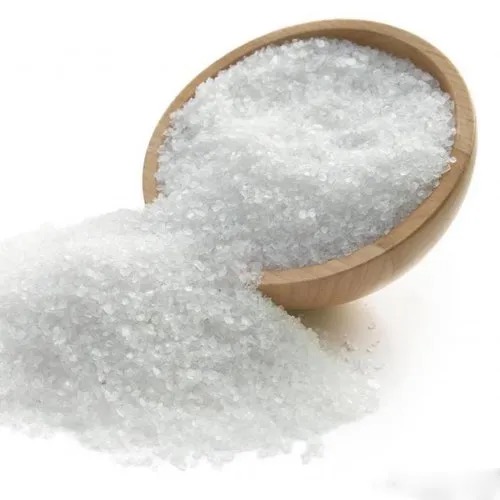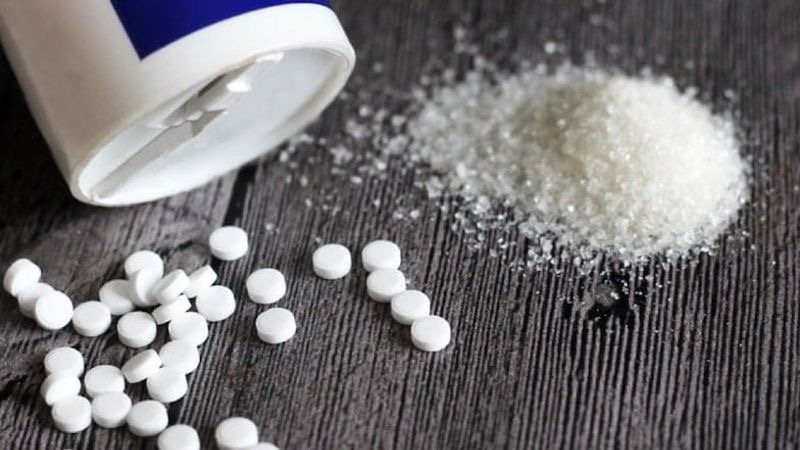Views: 222 Author: Sara Publish Time: 2025-11-11 Origin: Site








Content Menu
● Formulation and Industrial Use
● Metabolic and Systemic Interactions
● Health Safety and Regulatory Perspectives
● Taste, Texture, and Sensory Considerations
● Manufacturing and Quality Considerations
● Environmental and Ethical Considerations
● Practical Guidance for Overseas Manufacturers
● FAQ
>> 1. What is Sucralose and how is it produced?
>> 2. Does Sucralose affect blood sugar or insulin?
>> 3. How might Sucralose impact gut health?
>> 4. Is Sucralose safe for long-term consumption?
>> 5. Can Sucralose be used in cooking?
Sucralose is one of the most widely used artificial sweeteners in the global food, beverage, and medical nutrition industries. Its appeal lies in zero calories, extreme sweetness (about 600 times sweeter than sucrose), and remarkable stability across a broad range of pH and temperatures. For manufacturers, Sucralose offers a versatile tool to reduce sugar content, control caloric load, and maintain product taste profiles. For health-conscious consumers, the topic often centers on safety, metabolic effects, gut health, and long-term outcomes. This article examines what Sucralose is, how it interacts with human physiology, and the spectrum of current scientific perspectives, with a practical lens for product developers and overseas partners.

Sucralose is a synthetic sweetener created from sucrose by replacing three hydroxyl groups with chlorine atoms. This alteration yields a molecule that stimulates the sweetness receptors without contributing calories because it is poorly absorbed and largely excreted intact. In many jurisdictions, Sucralose is approved for use in a wide array of foods and drinks, including baked goods, beverages, dairy products, and dietary supplements, underscoring its functional versatility for manufacturers seeking neat sweetness without added caloric burden. For product formulators, this stability translates into reliable sweetness over shelf life, heat processing, and diverse storage conditions, enabling consistent consumer experiences across international markets.
- Food and beverage applications: Sucralose can be used as a primary sweetener or blended with other taste modifiers to achieve desired sweetness curves and mouthfeel. Its heat stability makes it suitable for baking and hot beverages, where some other zero-calorie sweeteners may lose sweetness or alter texture.
- Dietary and healthcare products: In pharmaceuticals, nutritionals, and medical foods, Sucralose helps maintain palatability while reducing energy content, which is particularly important in weight management programs, metabolic disease care, and pediatric formulations.
- Blended sweeteners: For overseas manufacturers, Sucralose is frequently combined with polyols or natural extracts to tune sweetness intensity, aftertaste, and texture without sacrificing caloric targets or product integrity over transit and storage.
Despite its zero-calorie claim, Sucralose's interactions with human physiology have prompted extensive investigation. The following areas are commonly studied:
- Blood sugar regulation: Many studies indicate minimal acute impact on fasting glucose in healthy individuals, but data are mixed regarding long-term insulin dynamics and glucose tolerance in specific populations or with habitual intake. The human body's response to sweet taste can influence appetite and insulin signaling in nuanced ways, suggesting that context—such as overall diet and metabolic health—matters for interpreting effects.
- Weight management: While Sucralose replaces sugar, some research suggests that non-nutritive sweeteners could influence energy balance through appetite regulation, taste adaptation, and reward pathways. The net effect on body weight may depend on compensatory behaviors, beverage choices, and the broader dietary pattern.
- Gut microbiota: An active area of inquiry is how Sucralose interacts with gut bacteria. Preliminary findings in some models point to shifts in microbial composition that could affect digestion, inflammatory status, and metabolic signaling. However, results across studies vary, and translation to long-term human health remains a focus of ongoing trials.
- Immune and inflammatory markers: Early and animal studies have explored potential immune and inflammatory responses to high-dose exposure, with some data suggesting increased intestinal permeability or altered immune signaling under specific conditions. Translating these findings to typical human consumption levels requires careful interpretation.
- Neurological and appetite regulation: Emerging research indicates that non-nutritive sweeteners may modulate brain regions involved in hunger perception and reward processing. Some human studies report changes in appetite signaling and subjective hunger cues after consumption, though findings are not universally consistent.
- Regulatory status: Global health authorities generally conclude that Sucralose is safe for the approved uses when consumed within established acceptable daily intake (ADI) levels. These assessments rely on toxicology, pharmacokinetics, and long-term data sets that consider realistic exposure scenarios.
- Risk-benefit considerations for manufacturers: For food and healthcare product developers, Sucralose offers a reliable ingredient for reducing sugar load while maintaining palatability and texture. Risk assessment should be aligned with local regulatory guidelines, consumer expectations, and ongoing monitoring of emerging evidence.
- Consumer communication: Transparent labeling, clear explanations of recommended usage levels, and education about where and how Sucralose is used help build trust. Given evolving research, ongoing dialogue with regulators and health professionals aids in maintaining compliance and credibility.

- Sweetness profile: Sucralose delivers a high-intensity sweetness with a taste profile that is generally clean but may have an aftertaste relative to consumer preferences, especially at lower concentrations or in complex flavor systems. Formulators often use blends to smooth aftertastes and balance sweetness onset.
- Aftertaste and mouthfeel: When used in combination with bulking agents or polyols, Sucralose can achieve a sugar-like mouthfeel while controlling caloric content. Texture, mouth-coating sensation, and sweetness duration are key variables in product performance across categories.
- Ingredient synergy: Blending Sucralose with sugar substitutes or natural extracts can tailor sweetness dynamics, reduce sweetness onset time, and modulate lingering aftertastes, enabling products to meet diverse consumer expectations across markets.
- Stability and processing: Sucralose maintains sweetness under heat and across pH ranges that challenge many other sweeteners. This stability reduces formulation risk for heat-treated products and shelf-stable beverages.
- Purity and quality control: As with any food ingredient, consistent quality, purity, and compliance with food-grade standards are essential. Manufacturers should source from reputable suppliers, implement robust QC testing, and monitor lot-to-lot variability.
- Regulatory labeling: Accurate ingredient disclosure and allergen statements as required by jurisdiction help ensure compliance and consumer trust. For many markets, Sucralose can be listed as such or under standardized codes as appropriate.
- Sustainability in production: The production of Sucralose involves chemical synthesis steps and purification processes. Manufacturers may consider environmental footprints, waste streams, and energy use in sourcing and production.
- Social responsibility: Transparent supply chains, fair labor practices, and adherence to safety standards in manufacturing plants are essential for partner relationships with overseas manufacturers and customers.
- Blending strategies: When developing blended sweeteners for international markets, consider target taste preferences, regulatory limits, and ingredient synergies. Sucralose can be paired with polyols, natural extracts, or other sweeteners to optimize sweetness, texture, and caloric profile.
- Regulatory diligence: Stay current with regional approvals,ADI values, and labeling requirements. Some markets maintain stricter limits on total artificial sweeteners or require explicit disclosure in nutrition information panels.
- Consumer education: Provide clear information on why Sucralose is used (calorie reduction, stability, taste) and how it fits into a balanced diet, particularly for health-focused products and medical nutrition.
Sucralose remains a widely used and practical tool for reducing caloric intake while preserving sweetness in foods, beverages, and healthcare products. The body of evidence suggests a nuanced picture: Sucralose is largely non-caloric and generally recognized as safe within regulatory guidelines, yet a growing number of studies point to potential effects on gut microbiota, appetite regulation, and certain metabolic or neurological pathways under specific circumstances or with high exposure. For manufacturers, the prudent path is to use Sucralose thoughtfully within blended sweetener systems, monitor consumer responses, and stay aligned with evolving scientific and regulatory guidance. For consumers, moderation and awareness of personal health goals and dietary patterns are key to making informed choices about Sucralose-containing products.

Sucralose is a synthetic sweetener derived from sucrose by replacing three hydroxyl groups with chlorine atoms, resulting in a molecule that is intensely sweet but has negligible calories. It is widely used in foods, beverages, and healthcare products due to its stability and sweetness efficiency.
Most research indicates minimal acute effects on blood glucose in healthy individuals, but long-term or population-specific results vary. Some studies suggest potential insulin signaling interactions with habitual use, highlighting the importance of context and metabolic health.
Some evidence points to changes in gut microbiota composition and function with Sucralose exposure, which could influence digestion and inflammation. Results are not universal, and effects may depend on dosage, duration, and overall diet.
Regulatory bodies generally consider Sucralose safe within established intake limits, but emerging research raises questions about immune, metabolic, and neurological effects that warrant ongoing study and surveillance.
Sucralose is heat-stable and suitable for cooking and baking, though some formulations may require flavor balancing to minimize aftertaste and ensure consistent sweetness across products.
[1](https://mindstreamintegrative.com/blog/rethinking-artificial-sweeteners-the-hidden-risks-of-sucralose-and-artificial-sweeteners/)
[2](https://www.frontiersin.org/journals/nutrition/articles/10.3389/fnut.2024.1387646/full)
[3](https://www.dzd-ev.de/en/press/press-releases/press-releases-2025/artificial-sweeteners-stimulate-hunger-signals-in-the-bra)
[4](https://www.cnn.com/2025/03/29/health/artificial-sweetener-sucralose-hunger-signals-wellness)
[5](https://www.neurology.org/doi/10.1212/WNL.0000000000214023)
[6](https://keck.usc.edu/news/calorie-free-sweeteners-can-disrupt-the-brains-appetite-signals/)
[7](https://www.endocrine.org/news-and-advocacy/news-room/endo-annual-meeting/endo-2025-press-releases/chen-press-release)
[8](https://pubmed.ncbi.nlm.nih.gov/40140714/)
[9](https://www.upmc.com/media/news/073125-artificial-sweetner)
[10](https://www.ajmc.com/view/the-double-edged-sword-of-artificial-sweeteners)
